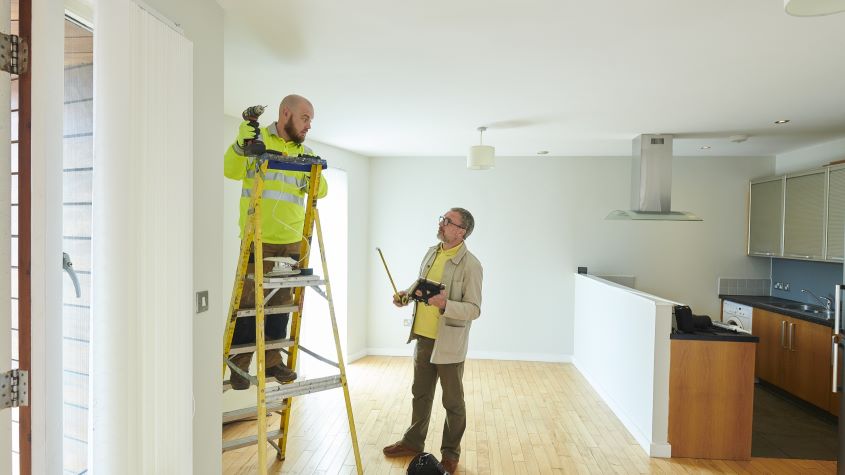Buy-to-let landlords face a £17.9bn bill for energy efficiency
Research from Knight Frank shows buy-to-let landlords could face a huge bill to upgrade their properties to an EPC rating of C or above


The deteriorating outlook for house prices, coupled with the rising costs of being a landlord are two factors driving investors out of the buy-to-let market.
And more landlords could be looking to sell their properties soon, as they face a combined bill of £17.9bn to make their properties more energy efficient, according to data from estate agent Knight Frank.
The government is currently consulting on legislation that would require all rental properties to have an EPC rating of C or above by 31 December 2025 for new tenancies and by 31 December 2028 for existing tenancies.
MoneyWeek
Subscribe to MoneyWeek today and get your first six magazine issues absolutely FREE

Sign up to Money Morning
Don't miss the latest investment and personal finances news, market analysis, plus money-saving tips with our free twice-daily newsletter
Don't miss the latest investment and personal finances news, market analysis, plus money-saving tips with our free twice-daily newsletter
Under current regulations, tenanted properties are required to have an EPC rating of E or above. Currently, around 60% of the 4.8 million households in the private rented sector have an EPC rating of D or below.
On average the cost of upgrading a property to an EPC rating of C is around £9,260.
While 13% of renters are willing to pay a premium for a low-carbon property, the average annual rent in 40% of local authorities would not cover the £9,260 required to bring a property up to the government’s new proposed rating.
A third of buy-to-let landlords expect to exit the market in 2023
A survey by the National Residential Landlords Association (NRLA) revealed a third of buy-to-let landlords expect to sell some of their properties this year. That’s the highest level of planned divestment in over six years.
Many buy-to-let landlords began exiting the market due to legislative changes even before the cost of living crisis and higher mortgage costs started to take a chunk out of their profits.
Indeed, data from Hamptons International shows a landlord would now need a rental yield of 4% to turn a profit. Back in 2020, investors could make a profit with a yield of 2%.
Higher-rate taxpayers have it worse – they need a yield of 5% to turn a profit.
More and more people are getting pushed into higher tax bands due to fiscal drag, which is leaving landlords with higher tax bills.
Additionally, changes made to mortgage interest tax relief made in 2020 mean landlords are no longer able to claim tax back on their mortgage repayments, receiving refunds only at the 20% basic rate instead.
What’s more, the changes made to the regulation means that landlords can be taxed even if they make a loss.
“Faced with this additional intense pressure on already stretched finances, landlords will likely be scrambling to protect their investments, and some will be weighing up their options,” says Brian Murphy, head of lending at Mortgage Advice Bureau.
The cost of making a home more energy efficient could run into the tens of thousands, and MAB research found many landlords will going to struggle to meet this.
“There is a dwindling incentive for landlords to stay in the market, as some risk making monthly losses on their property assets,” continues Murphy.
These costs will be harder to meet than ever before. Data from online property specialist My Auction showed that mortgage payments are now exceeding rental incomes as interest rates on buy-to-let mortgages rise due to interest rate hikes from the Bank of England.
Additionally, house price growth has been slowing over the last six months, and the OBR expects house prices will fall by 10% by 2024 due to the impact of higher borrowing costs and the cost of living crisis will have on the housing market.
While there are savings to be made by making a property more energy efficient, if this legislation passes landlords could look to downsize their portfolios or exit the sector.
Those still looking to buy will likely drive up demand for newer, more energy-efficient homes with better EPC ratings.
And if you are interested in purchasing a buy-to-let property, it’s more important than ever to look into the best areas for buy-to-let in the UK to make sure you’re getting the best possible return on your money.
Get the latest financial news, insights and expert analysis from our award-winning MoneyWeek team, to help you understand what really matters when it comes to your finances.
Nic studied for a BA in journalism at Cardiff University, and has an MA in magazine journalism from City University. She has previously worked for MoneyWeek.
-
 RICS: Seller confidence hits new high but buyers are yet to return to the property market
RICS: Seller confidence hits new high but buyers are yet to return to the property marketThe latest Residential Market Survey from the Royal Institution of Chartered Surveyors (RICS) shows there are signs that confidence is slowly returning to the housing market
-
 'Lockdown wills’ at increased risk of legal challenge
'Lockdown wills’ at increased risk of legal challengePressures caused by the pandemic led some people to rush their wills. Now, lawyers are saying problems are surfacing that could make them invalid
-
 Halifax: House price slump continues as prices slide for the sixth consecutive month
Halifax: House price slump continues as prices slide for the sixth consecutive monthUK house prices fell again in September as buyers returned, but the slowdown was not as fast as anticipated, latest Halifax data shows. Where are house prices falling the most?
-
 Rents hit a record high - but is the opportunity for buy-to-let investors still strong?
Rents hit a record high - but is the opportunity for buy-to-let investors still strong?UK rent prices have hit a record high with the average hitting over £1,200 a month says Rightmove. Are there still opportunities in buy-to-let?
-
 Pension savers turn to gold investments
Pension savers turn to gold investmentsInvestors are racing to buy gold to protect their pensions from a stock market correction and high inflation, experts say
-
 Where to find the best returns from student accommodation
Where to find the best returns from student accommodationStudent accommodation can be a lucrative investment if you know where to look.
-
 The world’s best bargain stocks
The world’s best bargain stocksSearching for bargain stocks with Alec Cutler of the Orbis Global Balanced Fund, who tells Andrew Van Sickle which sectors are being overlooked.
-
 Revealed: the cheapest cities to own a home in Britain
Revealed: the cheapest cities to own a home in BritainNew research reveals the cheapest cities to own a home, taking account of mortgage payments, utility bills and council tax
-
 UK recession: How to protect your portfolio
UK recession: How to protect your portfolioAs the UK recession is confirmed, we look at ways to protect your wealth.
-
 Buy-to-let returns fall 59% amid higher mortgage rates
Buy-to-let returns fall 59% amid higher mortgage ratesBuy-to-let returns are slumping as the cost of borrowing spirals.
